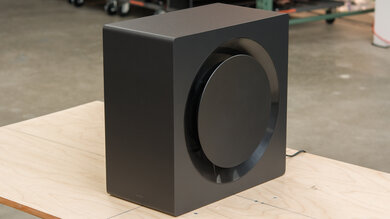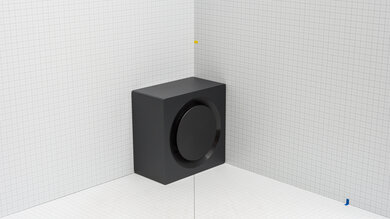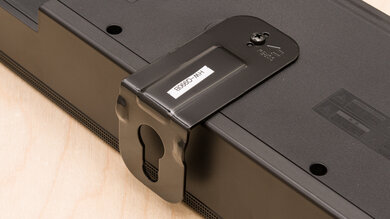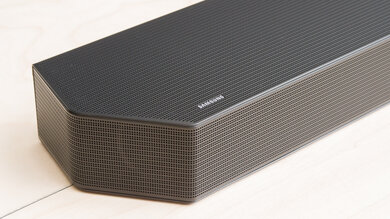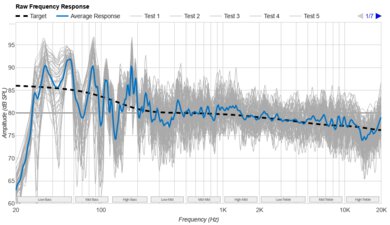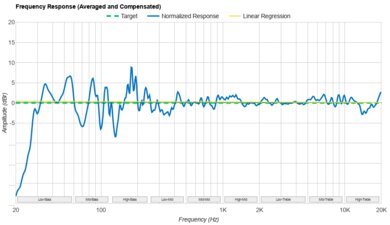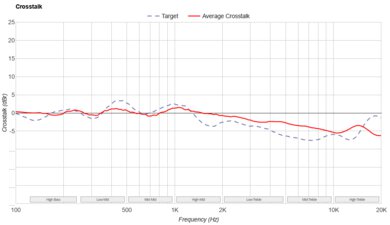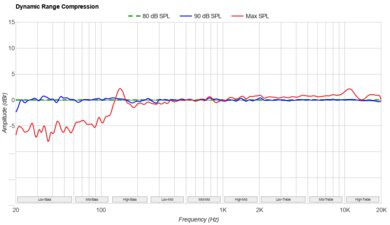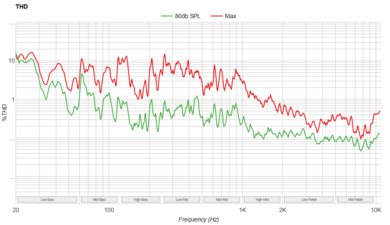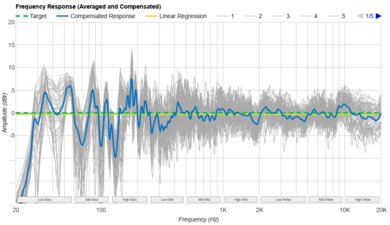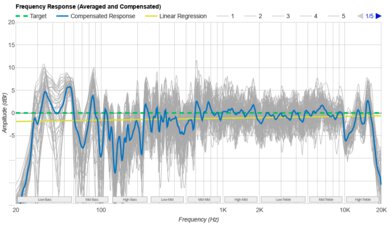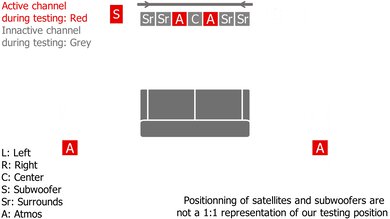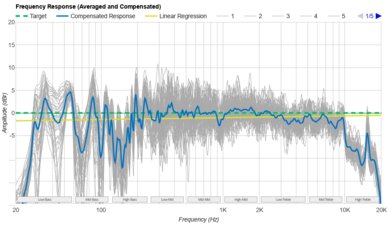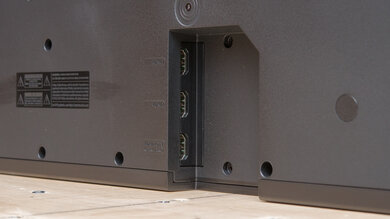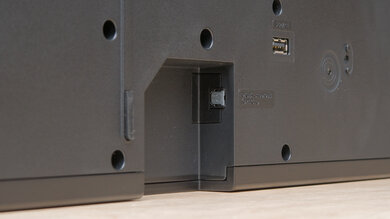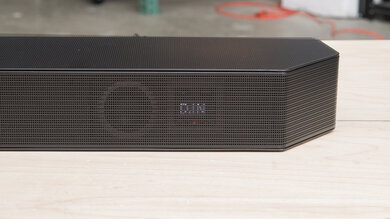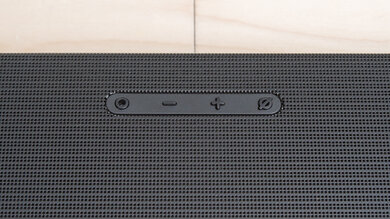The LG S90QY is the 2022 version of the LG SP9YA with built-in Meridian Technology to help with audio reproduction. Alongside the LG S80QY, it's the first soundbar from the manufacturer with an up-firing center channel. It doesn't come with rear speakers like the S95QR, but you can add them on separately if you want. There's also TV Sound Mode Share support for sound enhancement with compatible LG TVs, and you can buy an external WOWCAST dongle to connect it to your TV over a wireless connection.
Our Verdict
The LG S90QY is good for mixed usage. It's a versatile 5.1.3 setup with lots of sound enhancement features, including a room correction mode. With this on, its sound is quite even, with clear and present vocals and a present, thumpy bass. Its Atmos performance is fairly immersive, though it doesn't really replicate sounds from above or behind you. Also, its surround performance isn't the best.
- Room correction feature.
- Dolby Atmos support.
- Poor surrounds performance.
The LG S90QY is great for dialogue-heavy content like TV shows. It's a 5.1.3 setup with a discrete center channel as well as an up-firing center channel that reproduce dialogue with clarity and accuracy. 'Clear Voice' mode enhances dialogue if you need it, and there's a night mode feature to balance the volume level when you watch TV at night. A dip in the treble range nudges higher-pitched voices towards the back in certain tracks.
- Room correction feature.
- Dialogue enhancement feature.
- Great center channel performance.
- No graphic EQ.
The LG S90QY is very good for music. Like most premium setups, it has a room correction mode to optimize audio based on your room's acoustics—LG calls it AI Room Calibration. With it on, the sound is pretty even, and vocals and lead instruments are present in the mix. There's some extra boom in the bass out-of-the-box, and a dip in the treble that nudges some instruments towards the back in certain tracks. With its bass and treble adjustments, you can adjust its sound more to your liking.
- Room correction feature.
- Bass and treble adjustments.
- No graphic EQ.
The LG S90QY is good for movies. Its dedicated sub reproduces the deep thump and rumble in the bass with action-packed scenes, and dialogue is pretty clear in the mix, too. It does an okay job with Atmos content, creating a pretty immersive sound with a punchy bass. Without dedicated surround speakers, sound objects aren't as accurately localized to pinpoint locations in the soundstage. You can always add on a wireless rear speaker kit separately, though.
- Room correction feature.
- Dolby Atmos support.
- Poor surrounds performance.
Changelog
- Updated Aug 12, 2024: We've added a comparison between this soundbar and the LG S90TR in Stereo Frequency Response.
- Updated Jun 13, 2023: Converted to Test Bench 1.2. Updated the results for audio format support via ARC/eARC, HDMI In, and Optical. Added Video Passthrough to TV results as well.
- Updated May 29, 2023: Added market comparison with the Samsung HW-Q800C to the Stereo Frequency Response box.
- Updated May 16, 2023: Added market comparison with the LG S75QR in the Style - Satellites box.
Check Price
Differences Between Sizes And Variants
The LG S90QY is available in 'Black', and the label for our model is available here.
If you come across another version of this soundbar, let us know in the discussions, and we'll update the review.
Popular Soundbar Comparisons
The LG S90QY is the next generation of the LG SP9YA. It's a 5.1.3 setup, meaning that it comes with an up-firing center channel compared to its predecessor. However, the additional driver doesn't improve its center performance in a meaningful way, and its sound profile isn't as neutral as last year's model. While there are some new features like WOWCAST compatibility, when it comes to the sound, there isn't much of a difference between the two bars.
See also our recommendations for the best soundbars, the best 5.1 soundbars, and the best LG soundbars.
The LG S90QY is better than the LG S80QY. They're both Dolby Atmos soundbars with many extra features, but the 5.1.3 S90QY offers better performance with surround sound content.
The 5.1.3 LG S90QY is better than the 3.1.3 LG SC9S. They're both unique setups from the manufacturer that include an additional up-firing center channel for better vocal reproduction in the mix. However, the S90QY comes with additional side-firing surround channels, meaning that it doesn't have to downmix this content into stereo like the SC9S. The resulting sound is more clear and real with this content.
The Sonos Arc is better than the LG S90QY. The Sonos is a 5.0.2 setup, so it's a standalone bar. Still, it has better soundstage, surround, and Atmos performances. It can't reproduce as much low-bass as the LG, which comes with a dedicated sub, but you can always add one if you want to improve bass reproduction. The LG comes with additional sound enhancement features like EQ presets, but the Sonos' out-of-the-box sound is impressive without any tweaks.
The LG S90QY is the next generation of the LG SP9YA. The S90QY is a 5.1.3 setup, and it comes with one more up-firing driver for the center channel compared to its predecessor. However, the additional driver doesn't really improve its center performance in a meaningful way. Its sound profile isn't as neutral as last year's model, either. While there are some new features like TV Sound Mode Share and WOWCAST compatibility, when it comes to the sound, there isn't much of a difference between the two bars.
Test Results



